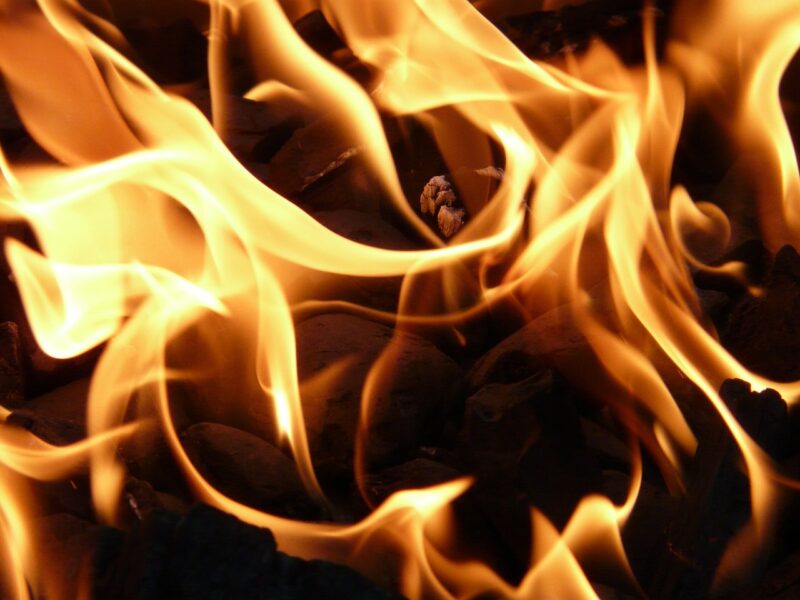
Fire is an essential yet complex phenomenon that has captivated humanity since the dawn of civilization. From the very first flickering flame that provided warmth and light to today’s controlled combustion processes in engines and industries, understanding the chemistry of fire is vital for both practical applications and safety measures.
—
### What is Fire?
Fire is a chemical reaction known as combustion, which occurs when a material (usually carbon-based) reacts with oxygen, producing heat and light. The visible part of fire we see, which we often refer to as flames, is a result of this reaction and involves various substances, including gases, solids, and, sometimes, liquids.
—
### The Fire Triangle: Fuel, Heat, and Oxygen
To understand fire, one must familiarize themselves with the Fire Triangle, which consists of three essential components:
1. **Fuel**: Any combustible material, such as wood, paper, or gasoline, that can be ignited.
2. **Heat**: Sufficient temperature is required to initiate combustion. Heat can come from various sources, including friction, electrical sparks, or even the sun’s rays.
3. **Oxygen**: Fire needs an oxidizer, and in most cases, this is oxygen in the air. Typically, around 21% of the atmosphere is oxygen, which is usually sufficient for fire to occur.
Without any one of these components, fire cannot exist. Thus, removing one of them effectively extinguishes a fire.
—
### The Combustion Process Explained
The combustion process can be broken down into two types:
– **Complete Combustion**: Occurs when there is a sufficient amount of oxygen for the combustion of fuel. This reaction results in carbon dioxide and water as products, plus a release of heat energy.
– **Incomplete Combustion**: Occurs when the oxygen supply is limited. Instead of fully converting the fuel to carbon dioxide and water, this process can produce carbon monoxide, soot, and other hydrocarbons, often resulting in less energy and more hazardous substances.
—
### Chemical Reactions Involved in Combustion
The fundamental chemical reaction of combustion can be represented as follows:
[ ext{Fuel} + ext{Oxygen} rightarrow ext{Carbon Dioxide} + ext{Water} + ext{Heat} ]
For example, the combustion of methane (a primary component of natural gas) can be represented by the equation:
[ ext{CH}_4 + 2text{O}_2 rightarrow text{CO}_2 + 2text{H}_2text{O} + ext{Heat} ]
### The Phases of Combustion
**Ignition**: The initial phase where sufficient heat triggers the combustion reaction. This can be ignited through various means:
– Sparks or flames
– High temperatures
– Chemical reactions in some cases.
**Flame Propagation**: After ignition, the fire continues to spread, mainly due to the heat produced by combustion sustaining the reactions and igniting additional fuel around it.
**Extinction**: The fire eventually dies down when it has consumed all available fuel or when one or more elements of the Fire Triangle (fuel, heat, oxygen) are removed.
—
### The Role of Flames in Combustion
Flames are a visible manifestation of fire and are created during the combustion process. They consist of hot gases that emit light due to the excitation of electrons in the molecules of the burning material. The color and appearance of flames can indicate the efficiency of combustion:
– **Blue Flame**: Indicates complete combustion; typical in gas stoves burning natural gas.
– **Yellow/Orange Flame**: Suggests incomplete combustion; usually seen in fires that produce soot.
– **Red Flame**: Can result from the burning of certain materials that emit a red color, such as metals in fireworks.
—
### Fire Safety and Management
Understanding the chemistry of fire is crucial not only for harnessing its power but also for managing its dangers. Here are essential fire safety practices:
– **Fire Extinguishers**: Different fire extinguishers are suitable for different classes of fire based on the type of fuel. For instance, water extinguishers are effective on combustible solids (Class A), while foam extinguishers are suitable for flammable liquids (Class B).
– **Smoke Detectors**: Early detection is vital for fire safety. Smoke detectors can alert occupants before the fire spreads.
– **Escape Routes**: Clearly marked exits and routes can save lives during a fire emergency.
—
### Conclusion
The chemistry of fire is a fascinating interplay of elements, reactions, and energy conversion. Whether in nature or our homes, understanding the principles of combustion not only allows us to utilize fire’s benefits but also to mitigate its risks effectively. Therefore, appreciating its science is crucial for safety, especially in a fast-paced world where fires can occur due to natural causes, accidents, or neglect.
With the right knowledge and precautions in place, we can enjoy the warmth, beauty, and utility of fire, all while respecting its potential dangers.








